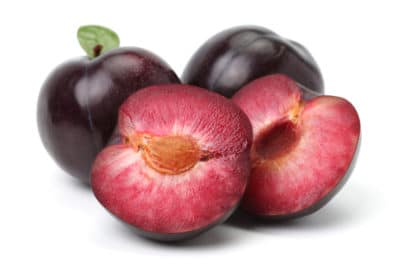Pits and Seeds: What’s the Difference?
Seeds are the ovule of the plant which contains an embryo within. The embryo is the fertilized portion of the flower, and it grows during germination, producing an above ground shoot and below ground root system when planted.
Pits are larger structures containing a single seed or a group of seeds. While there can be more than one seed in a pit, all pit-containing fruits have no more than one pit.
Fruits containing pits include:
- Avocados
- Stone fruit
- Dates
- Olives
Fruits containing seeds include:
- Apples
- Oranges
- Grapefruits
- Pears
- Grapes
Are Plum Pits Edible?
The whole pit of plum trees is generally too large and indigestible to be eaten with its hard outer casing intact. The outer shell can be cracked, revealing a small seed, or embryo, inside. This is the part of the pit which grows into a new tree when planted, and it is soft enough to eat.
However, the pits of all fruit in the stone fruit group contain hydrogen cyanide in a chemical compound known as amygdalin. Hydrogen cyanide is poisonous, but the amount contained in a single pit is too small to be harmful. Nonetheless, eating plum pits is not recommended.
Types of Pits in Plums
Plums come in both cling and freestone types, as do peaches and nectarines. Cling types have flesh sticking tenaciously to the pit and freestones have flesh that parts easily from the stone.
Freestone types of plum and other stone fruit are easier to process for jams, jellies, and pies than clingstone varieties because it is easier to remove the pit. These varieties are juicy and sweet, but firm, making them easy to chop or slice.
Clingstone fruits are often larger than freestone varieties, and some of the juicy flesh is lost when processing or eating the fruit. The extra juiciness of clingstone varieties can make them especially good for sauces, and they are always good for eating fresh.
There are also semi-freestone varieties with a blend of characteristics of both freestone and clingstone.
Growing Plum Trees from Pits
Pits from stone fruit, including plums, can be planted and sprouted to produce new trees, however, the new tree may not be the same as the tree the pit came from.
